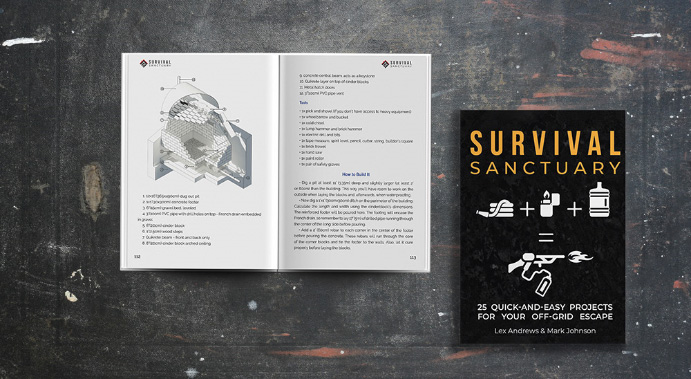Exploring the Charm of Eastern Europe

Table of Contents
1. Introduction to Eastern Europe
Eastern Europe is a region that has captivated travelers with its stunning landscapes, rich history, and diverse cultures. This part of the continent offers a unique blend of modernity and tradition, making it an increasingly popular destination for tourists from around the world. In this segment, we will delve into the geographical and cultural landscape of Eastern Europe, explore its importance as a travel destination, and highlight the key reasons why it is gaining popularity among travelers.
Overview of Eastern Europe's Geographical and Cultural Landscape
Eastern Europe stretches from the Baltic Sea in the north to the Balkan Peninsula in the south, encompassing an array of countries each with its own distinct charm. The region is home to stunning natural landscapes, from the majestic Carpathian Mountains to the picturesque Danube River, offering endless opportunities for adventure and exploration.
Culturally, Eastern Europe is a tapestry woven with influences from various civilizations throughout history. This rich heritage manifests itself in the region's music, art, and architecture, which reflect a mixture of Western, Eastern, and indigenous traditions. From the baroque charm of Prague to the vibrant folk traditions of Romania, Eastern European culture offers an authentic and immersive experience for travelers.
Importance of Eastern Europe as a Travel Destination
In recent years, Eastern Europe has emerged as a travel hotspot, attracting adventurers, history enthusiasts, and cultural explorers alike. This section will outline the significance of Eastern Europe as a must-visit destination.
- Rich Historical Significance: Eastern Europe is home to numerous UNESCO World Heritage Sites, ancient castles, and remnants of empires past. Visitors can step back in time as they explore medieval towns, grand cathedrals, and historic fortresses that tell the stories of the region's complex past.
- Stunning Natural Beauty: Nature lovers will find solace in Eastern Europe's diverse landscapes. Whether it's hiking through the untouched wilderness of the Slovakian Tatra Mountains or exploring the azure waters of Croatia's Dalmatian Coast, the region offers an abundance of natural wonders.
- Vibrant Cultures and Traditions: Each country in Eastern Europe boasts a rich cultural tapestry that is celebrated through colorful festivals, traditional music, and dance. Travelers can partake in these lively events and experience the warm hospitality of the locals.
- Affordable Travel Options: Compared to Western Europe, Eastern Europe is known for its affordability, making it an attractive choice for budget-conscious travelers. Visitors can enjoy quality accommodations, delicious cuisine, and unique experiences at a fraction of the cost.
Key Reasons Why Eastern Europe is Gaining Popularity Among Travelers
The allure of Eastern Europe lies in its off-the-beaten-path experiences, offering travelers the chance to discover hidden gems and untold stories. Here are some key reasons why more and more tourists are flocking to this fascinating region:
- Untouched and Unexplored Destinations: Eastern Europe offers a sense of adventure as many of its breathtaking locations remain relatively undiscovered by mass tourism. Countries like Albania, Moldova, and Montenegro provide a fresh and authentic experience away from the crowds.
- Culinary Delights: Food enthusiasts will delight in Eastern Europe’s diverse culinary offerings. From hearty Polish pierogi to the exotic flavors of Georgian cuisine, the region presents a gastronomic journey that appeals to every palate.
- Rich Artistic Heritage: The artistic spirit of Eastern Europe is evident in its stunning architecture and vibrant art scenes. Cities like Budapest and Bucharest feature an eclectic mix of classic and modern designs, while art galleries and museums abound with masterpieces waiting to be explored.
- Ease of Travel: With increasing connectivity, getting to and around Eastern Europe has never been easier. Enhanced infrastructure, budget airlines, and improved public transport offer convenient and cost-effective travel options across the region.
- Welcoming Atmosphere: Eastern Europeans are renowned for their hospitality and friendly demeanor. Visitors are often made to feel at home, creating a warm and inviting atmosphere that enhances the travel experience.
In conclusion, Eastern Europe is a captivating destination that offers a rich blend of history, culture, and natural beauty. As travelers seek authentic and affordable experiences, the allure of this region continues to grow. Whether you're drawn to its historical landmarks, picturesque landscapes, or vibrant cultures, Eastern Europe promises an unforgettable journey filled with discovery and wonder.

2. Historical and Cultural Richness
Eastern Europe stands as a fascinating testament to the incredible journey of human history. Its historical and cultural richness is not just a tapestry of distant pasts but an ongoing narrative that continues to shape its present and future. The region's diverse heritage and traditions are unrivaled in their ability to captivate travelers, offering a unique blend of experiences that are rich in significance and breathtaking in beauty. In this segment, we delve into the various aspects that make Eastern Europe a must-visit for history aficionados and cultural enthusiasts alike.
Exploration of Eastern Europe's Diverse Heritage and Traditions
The vast region of Eastern Europe has been a melting pot of various cultures and civilizations. From the Slavic tribes to the Austro-Hungarians, and the Ottomans, each has left indelible marks. This diversity has resulted in a rich tapestry of traditions that continue to thrive today.
- Slavic Heritage: The heart of Eastern Europe is deeply rooted in Slavic culture. This heritage is reflected in the region's literature, folklore, and festivals. The Slavic languages add an additional layer of cultural depth, offering nuances that only native tongues can provide.
- Influence of the Ottoman Empire: The historical presence of the Ottoman Empire has left an enduring impact on Eastern European architecture, cuisine, and religious practices. The cityscapes dotted with bathhouses and minarets tell tales of a bygone era.
- Austro-Hungarian Influence: The Austro-Hungarian era introduced a new architectural elegance, music, and art that continue to be celebrated, especially in cities like Prague and Budapest.
Highlighting Must-Visit Historical Landmarks and Sites
Eastern Europe is home to numerous historical landmarks, each with its own story. These sites offer a glimpse into the past and an understanding of the region's complex history.
- Budapest's Buda Castle: Perched atop Castle Hill, Buda Castle is a striking example of baroque architecture, offering a panoramic view of the Danube River. Its history dates back to 1265, although it has been rebuilt many times.
- Prague's Charles Bridge: Built in the 14th century, the Charles Bridge in Prague is not just a means of crossing the Vltava River but a walkway through history, adorned with statues of significant historical figures.
- Krakow's Wawel Castle: This UNESCO World Heritage site is a cultural and national symbol for Poles, with its gothic cathedral and a treasury of Polish arts and artifacts.
- Chernobyl Exclusion Zone: While not a traditional historical site, the Chernobyl Exclusion Zone is a stark reminder of recent history and the nuclear disaster that occurred there in 1986. It offers guided tours to understand the impact of the event.
- Moscow's Red Square: At the heart of Russia stands the Red Square, with its iconic St. Basil's Cathedral. This site is steeped in Russian history and culture, telling stories that date back centuries.
The Impact of Eastern Europe’s History on Its Current Culture and Lifestyle
The culture and lifestyle in Eastern Europe today are a direct reflection of its storied past. The historical influences continue to manifest in various facets of life, from cuisine to art and daily customs.
- Cuisine: The culinary traditions of Eastern Europe are a flavorful amalgamation of various cultural influences. The rich and hearty dishes often include ingredients like potatoes, cabbage, and pork, with dishes like Polish pierogi and Hungarian goulash standing out as quintessential examples.
- Architecture: The architectural landscape of Eastern Europe is a living museum of historical styles. From the Gothic spires of Prague to the Ottoman-influenced structures in the Balkans, the buildings are as diverse as the histories they represent.
- Festivals and Traditions: Festivals such as the Kaziuki Fair in Lithuania or the Maslenitsa festival in Russia highlight the fusion of pagan, Christian, and local traditions. These celebrations are vibrant expressions of Eastern European culture, offering visitors a unique immersion into the way of life.
- Art and Music: The arts in Eastern Europe have been deeply influenced by its tumultuous history. From classical compositions by composers like Chopin to contemporary street art in Berlin, the creative expressions in the region are deeply intertwined with historical context.
In conclusion, Eastern Europe offers a rich blend of historical and cultural experiences that are deeply interwoven with its current lifestyle. Whether it's through exploring ancient castles, wandering through bustling city squares, or tasting the unique regional cuisine, the heritage of Eastern Europe invites visitors not just to observe, but to become a part of its ongoing story.
Embark on a journey that promises both depth and discovery, as Eastern Europe's diverse heritage and traditions await to unfold their timeless tales.

3. Breathtaking Nature and Scenic Landscapes
Eastern Europe is a treasure trove of breathtaking natural beauty, offering a rich tapestry of stunning landscapes, diverse ecosystems, and unique geological formations that captivate travelers from around the globe. From majestic mountains and sprawling national parks to charming rural areas, Eastern Europe promises an unforgettable experience for nature lovers and adventure enthusiasts alike. Let's delve into the wonders of Eastern Europe's natural beauty and explore the myriad opportunities it offers.
Description of Eastern Europe's Unique Natural Beauty
Eastern Europe boasts a varied terrain that encompasses everything from lush forests and serene lakes to rugged mountains and picturesque countryside. This region is marked by its pristine wilderness, where nature reigns supreme and biodiversity thrives. Its untamed landscapes offer a refuge for wildlife, while the untouched vistas provide a stunning backdrop for exploration and adventure.
- The Carpathian Mountains: Stretching across several countries, the Carpathians are home to dense forests, alpine meadows, and shimmering mountain lakes. This mountain range is a paradise for hikers, offering breathtaking vistas and a chance to encounter diverse wildlife.
- The Danube Delta: A UNESCO World Heritage Site, this vast wetland in Romania is a haven for birdwatchers and nature enthusiasts. The delta's complex network of channels, lakes, and marshes is teeming with bird species and aquatic life.
- The Balkan Peninsula: Known for its striking contrasts, the Balkans feature rugged mountains, crystal-clear rivers, and idyllic coastline. This region invites outdoor adventurers to explore its challenging terrains.
Guide to the Best National Parks, Mountains, and Rural Areas
For those seeking to immerse themselves in the unparalleled beauty of Eastern Europe, the following national parks and natural areas offer spectacular landscapes and a wealth of outdoor activities.
- Białowieża Forest National Park (Poland): As one of the last and largest remaining parts of the primeval forest that once covered much of Europe, Białowieża Forest is a UNESCO World Heritage Site. Expect encounters with European bison, ancient oaks, and a serene environment perfect for gentle hikes.
- Triglav National Park (Slovenia): Dominated by the Julian Alps and home to Mount Triglav, Slovenia's highest peak, this park offers dramatic alpine scenery. Adventurous souls can engage in activities such as rock climbing, paragliding, and white-water rafting.
- Rila National Park (Bulgaria): Encompassing Bulgaria's highest mountain range, Rila National Park is famous for its glacial lakes, rugged peaks, and rich biodiversity. The Seven Rila Lakes trail is a popular route offering breathtaking views.
- Durmitor National Park (Montenegro): Known for its majestic landscapes, Durmitor encompasses deep canyons, glacial lakes, and stunning mountain plateaus. Visitors can explore the Tara River Canyon, one of the deepest in Europe, via rafting or hiking.
- Plitvice Lakes National Park (Croatia): Renowned for its cascading lakes and waterfalls, Plitvice offers a fairy-tale setting. Wooden footbridges and walkways wind through lush vegetation, providing easy access to this stunning water wonderland.
Adventure and Outdoor Activities Available for Nature Enthusiasts
Eastern Europe is a playground for outdoor enthusiasts, offering a plethora of activities that cater to all levels of adventure seekers. Whether you seek thrilling escapades or quiet communion with nature, this diverse region has something for everyone.
- Hiking and Trekking: With its abundant mountain ranges and scenic trails, Eastern Europe is a hiker’s paradise. From short nature walks to extended treks, there's an abundance of options for those looking to explore on foot.
- Water Sports: The region's rivers, lakes, and coastline provide ample opportunities for water sports. Try kayaking or canoeing in the Danube Delta, or enjoy sailing and diving along the Adriatic coast.
- Birdwatching: The diverse habitats in Eastern Europe are perfect for ornithologists and bird lovers. The Danube Delta and Narva Wetlands are hotspots for spotting rare and migratory birds.
- Skiing and Snowboarding: In winter, the mountains of Eastern Europe transform into a haven for skiers and snowboarders. Resorts in the Carpathians and the Balkans offer slopes for all skill levels.
- Camping and Stargazing: For a more serene experience, campsites set within national parks or mountainous areas provide a chance to connect with nature under a starlit sky.
From the towering peaks of the Carpathians to the tranquil waters of Plitvice, Eastern Europe is a tapestry of natural beauty and adventure that beckons to be explored. Whether you're seeking adrenaline-pumping adventures or peaceful retreats, this region offers an array of experiences that celebrate the wild heart of nature.
4. Authentic Eastern European Cuisine
Eastern Europe is a tapestry woven with a rich history, vibrant culture, and a culinary scene that's as diverse as its landscapes. From smoky stews to hearty breads, Eastern European cuisine is a delightful journey through flavors that tell centuries-old tales. Whether you're a foodie searching for new flavors or a traveler eager to explore, the authentic gastronomic experiences of Eastern Europe promise a delicious adventure. In this segment, we'll explore the essence of Eastern European cuisine, recommend traditional dishes from various countries, and highlight must-visit food festivals and markets.
Introduction to the Diverse and Flavorful Eastern European Culinary Scene
The Eastern European culinary scene is defined by its diversity and depth, influenced by a myriad of cultural and historical factors. The region spans numerous countries, each with its own distinct culinary traditions, yet all contributing to a shared flavor palette characterized by hearty ingredients, rustic techniques, and a love for bold, tangy, and earthy flavors.
Bread is a staple across the region, often homemade and served with every meal. From the sourdoughs of Poland to the rye breads of Russia, each loaf tells a story of natural ingredients and time-honored practices. Meanwhile, meats such as pork, beef, and chicken are frequently used, enhanced by artisanal curing and smoking methods.
Vegetables like cabbage, beets, potatoes, and mushrooms often appear in soulful stews and salads, showcasing the region's agricultural abundance. For those with a sweet tooth, desserts such as Hungary's dobos torte or Romania's papanasi are heavenly treats rooted in indulgent traditions.
Recommendations for Traditional Dishes to Try in Each Country
-
Poland:
Pierogi: These dumplings are a must-try. Stuffed with various fillings such as cheese, potatoes, or meat, they can be served boiled, fried, or baked.
Bigos: Also known as "hunter's stew," bigos is a savory dish filled with shredded cabbage, various types of meat, and a range of spices.
-
Hungary:
Goulash: A rich, flavorful stew made of meat and vegetables, seasoned with paprika and other spices.
Langos: This popular street food is essentially a deep-fried flatbread, typically topped with garlic, sour cream, and cheese.
-
Czech Republic:
Knedliky: These dumplings are a Czech staple, often served with meats and gravy.
Svíčková: A tender beef dish marinated and cooked in a creamy sauce, typically served with knedliky.
-
Romania:
Sarmale: Cabbage leaves stuffed with a mixture of meat and rice, then slow-cooked for a rich flavor.
Mămăligă: A traditional porridge made from yellow cornmeal, often served as a side dish to various meat dishes.
-
Bulgaria:
Banitsa: A traditional pastry made with filo dough filled with a mixture of eggs and cheese.
Shopska Salad: A refreshing salad made with tomatoes, cucumbers, onions, peppers, and sirene cheese.
Spotlight on Food Festivals and Markets Worth Visiting
To truly immerse yourself in the culinary culture of Eastern Europe, consider visiting some of the region's vibrant food festivals and markets. These events offer a unique opportunity to sample a wide range of traditional dishes, encounter regional specialties, and engage with local food artisans.
-
Christmas Markets across Eastern Europe are a feast for the senses. Notable ones like the Prague Christmas Market or Krakow's Main Square Market transform the festive season with stalls offering traditional sausages, mulled wine, and gingerbread treats.
-
The Budapest Wine Festival is a celebration of Hungary's rich winemaking history and its world-renowned Tokaj wines. Guests can indulge in a variety of wine tastings, pairings, and culinary delights.
-
The Baltic Herring Festival in Finland celebrates one of the region's staple fish. Held in Helsinki, the festival features an array of fresh herring-based dishes and seafood specialties.
-
Zapusty Carnival in Poland is a pre-Lenten festival where food takes center stage. Traditional dishes, particularly pastries like paczki, are enjoyed in abundance.
-
The Moldovan Wine Festival is an autumnal tribute to the country's wine-growing legacy, featuring vineyard tours, tastings, and local gastronomy.
Whether you’re drawn by the robust flavors of traditional dishes or the vibrant scenes of local markets and festivals, exploring Eastern Europe through its cuisine offers a deeper understanding and appreciation of this charming and eclectic region. From seasoned travelers to curious food lovers, Eastern European cuisine welcomes you with open arms and hearty meals.









